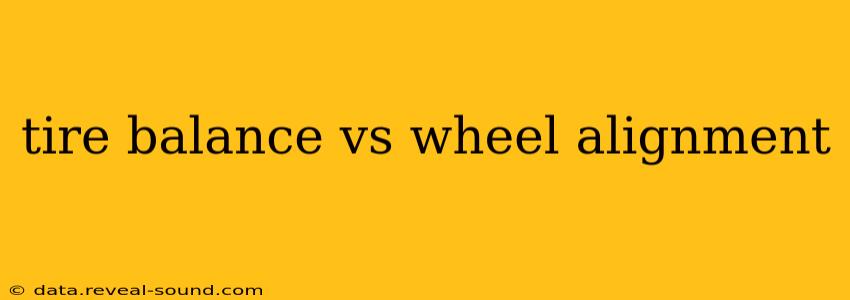Maintaining your vehicle's tires and wheels is crucial for optimal performance, safety, and fuel efficiency. Two essential services often get confused: tire balancing and wheel alignment. While both contribute to a smooth ride, they address different aspects of your vehicle's handling. This article clarifies the distinctions, helping you understand when each service is needed.
What is Tire Balancing?
Tire balancing corrects imbalances in your tires and wheels. These imbalances, caused by uneven weight distribution, can lead to vibrations felt in the steering wheel, seat, and even the entire vehicle, especially at higher speeds. These vibrations aren't just annoying; they can also contribute to premature tire wear and damage to suspension components.
During a tire balancing service, a technician uses a balancing machine to precisely measure the weight distribution of each wheel and tire assembly. Small weights are then added to the wheel's rim to counteract the imbalance and create a perfectly balanced assembly. This ensures a smooth, vibration-free ride.
What is Wheel Alignment?
Wheel alignment, on the other hand, focuses on the angle of your wheels relative to each other and the road. Proper alignment ensures your tires contact the road evenly, maximizing traction, minimizing tire wear, and improving fuel efficiency. Misalignment can lead to uneven tire wear, pulling to one side, difficulty steering, and reduced control of the vehicle.
A wheel alignment service involves adjusting the angles of your wheels—toe, camber, and caster—to the manufacturer's specifications using specialized equipment. These adjustments are made at the steering linkage and suspension components.
What are the Signs of an Imbalance?
Identifying the need for tire balancing is relatively straightforward:
- Vibrations: The most common sign is noticeable vibrations felt in the steering wheel, seat, or floor, particularly at higher speeds.
- Uneven Tire Wear: While not a primary indicator of imbalance, severe imbalance can contribute to uneven tire wear.
What are the Signs of Misalignment?
Recognizing the need for a wheel alignment involves noticing these issues:
- Pulling to One Side: Your car consistently pulls to the left or right while driving.
- Uneven Tire Wear: Uneven tire wear, such as feathering (angled wear pattern) or cupping (wear in the center or edges), is a strong indicator of misalignment.
- Difficult Steering: The steering wheel feels loose, tight, or requires excessive effort to turn.
- Vehicle Wandering: The car seems to wander or drift from its intended lane.
How Often Should I Get My Tires Balanced?
It's generally recommended to have your tires balanced whenever you get new tires installed. Beyond that, it’s a good idea to check your tires and have them balanced if you notice vibrations. The frequency depends on your driving habits and road conditions.
How Often Should I Get My Wheels Aligned?
Alignment needs vary depending on driving habits and road conditions. However, it's a good practice to get a wheel alignment at least once a year or every 6,000-8,000 miles. You should also get an alignment after hitting a pothole or experiencing a significant impact that could have affected your wheel alignment.
Can I Get My Tires Balanced and Aligned at the Same Time?
Yes, absolutely! In fact, many tire shops and automotive repair centers recommend doing both services simultaneously. They are independent procedures that address different aspects of tire and wheel performance. Having both done at once can provide a smoother, safer, and more efficient driving experience.
Does a Wheel Alignment Affect Tire Balance?
No, wheel alignment does not directly affect tire balance. They are separate processes. However, if your tires are significantly out of balance, the vibrations caused can potentially mask the symptoms of a misalignment. For accurate alignment checks and measurements, it's best to have your tires balanced first.
By understanding the differences between tire balancing and wheel alignment, you can ensure your vehicle handles optimally, providing a smooth, safe, and fuel-efficient driving experience. Remember regular maintenance prevents bigger problems down the road!
